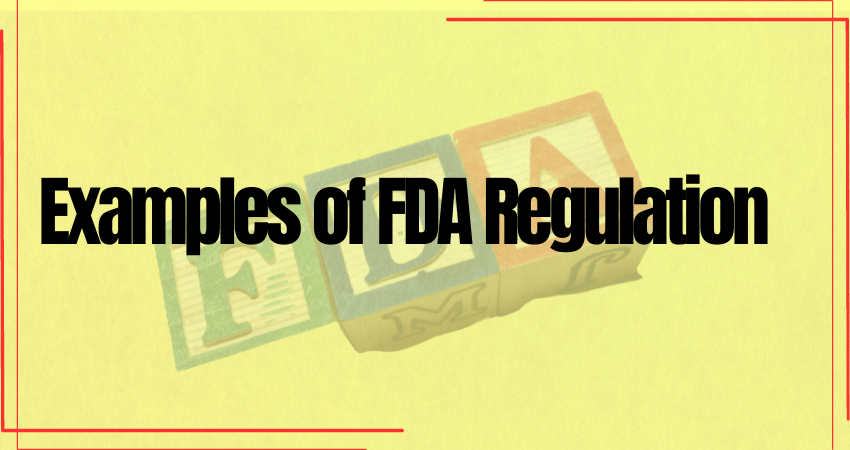The Food and Drug Administration (FDA) plays a pivotal role in safeguarding public health in the United States. This regulatory body is responsible for ensuring the safety and efficacy of a wide range of products, from pharmaceuticals and medical devices to food and cosmetics. In this article, we will delve into ten examples of FDA regulations, shedding light on how they impact our daily lives and the industries they govern.
Examples of Food and Drug Administration Regulation
Examples of Food and Drug Administration Regulations are given below:
1. Drug Approval Process
One of the most critical functions of the FDA is to evaluate and approve new drugs. The agency assesses the safety and effectiveness of medications through extensive clinical trials before granting approval. This process ensures that the medicines we rely on are safe and reliable.
2. Food Labeling Requirements
The FDA mandates detailed labeling for all food products sold in the U.S. This includes nutritional information, ingredients, and allergen warnings. These requirements empower consumers to make informed choices about the food they consume.
3. Medical Device Regulation
Medical devices, such as pacemakers and surgical instruments, must meet rigorous FDA standards. This regulation guarantees that these devices are safe for use and meet specific quality standards.
4. Dietary Supplements Oversight
The FDA monitors dietary supplements, like vitamins and herbal remedies, to ensure their safety and labeling accuracy. This regulation helps protect consumers from potentially harmful products.
5. Cosmetic Product Safety
The cosmetics industry is subject to FDA regulation, which includes ensuring that cosmetic products are safe for use and accurately labeled. This oversight prevents harmful chemicals from entering our skincare routines.
6. Tobacco Control
In recent years, the FDA has taken significant steps to regulate the tobacco industry. This includes mandating warning labels on cigarette packages and limiting access to tobacco products for minors.
7. Biotechnology and Genetically Modified Organisms (GMOs)
The FDA evaluates genetically modified organisms in our food supply. This regulation ensures that GMOs are safe for consumption and labeled appropriately.
8. Foodborne Illness Prevention
The FDA implements strict regulations to prevent foodborne illnesses. This includes monitoring and inspecting food facilities to ensure the safe production and distribution of food products.
9. Blood and Blood Products
Blood transfusions and related products must meet FDA guidelines to ensure they are safe and free from contaminants. This oversight is crucial in healthcare to prevent the spread of diseases.
10. Ensuring Generic Medication Quality
The FDA is responsible for ensuring the quality and safety of generic medications, making them more affordable options for consumers while maintaining effectiveness.
In conclusion, the FDA’s regulations touch every aspect of our lives, from the medications we take to the food we eat and the products we use daily. These regulations are designed to protect our health and well-being, making the FDA a vital institution for public safety and the quality of life in the United States. As a consumer, it’s essential to understand and appreciate the role the FDA plays in ensuring the safety and efficacy of the products we rely on.

